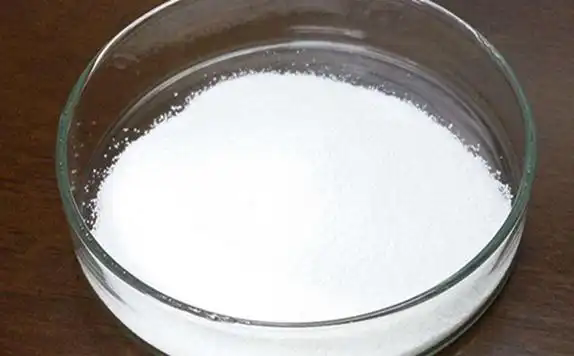
NEWS
Understanding Hydrolyzed Vegetable Protein vs MSG: Key Differences and Health Implications
2024-12-20
In the world of food additives, hydrolyzed vegetable protein (HVP) and monosodium glutamate (MSG) are two commonly discussed ingredients. Both are used to enhance the umami flavor profile of various food products, such as soups, processed meats, snacks, and seasonings. However, while they share similarities in their purpose, they differ in composition, production methods, and potential health effects. This article will delve into these two ingredients, offering insights on their differences, uses, and potential health concerns.
What is Hydrolyzed Vegetable Protein (HVP)?
Hydrolyzed vegetable protein is a flavor enhancer derived from plant-based sources such as soy, corn, or wheat. The process of hydrolysis breaks down the proteins in these plants into smaller peptides and amino acids, which intensify the savory taste commonly referred to as umami.
How is Hydrolyzed Vegetable Protein Made?
HVP is produced by treating vegetable proteins with acids or enzymes to break down the protein molecules into their constituent amino acids and smaller peptides. This process makes the protein easier for the body to absorb and enhances its ability to impart a rich, savory flavor to food.
| Step | Process |
|---|---|
| Protein Extraction | Vegetables (soy, wheat, corn) are processed to extract proteins. |
| Hydrolysis | The proteins undergo hydrolysis using acid or enzymes to break them down into amino acids. |
| Refining | The hydrolyzed liquid is purified and concentrated into a powder or liquid form. |
Common Uses of Hydrolyzed Vegetable Protein
HVP is widely used in the food industry for its ability to enhance the flavor of various products, including:
- Soups and broths
- Seasoning mixes
- Processed meats
- Snack foods
- Instant noodles
Because of its plant-based origin, HVP is often marketed as a natural alternative to MSG, especially for people seeking vegetarian or vegan options.
What is Monosodium Glutamate (MSG)?
Monosodium glutamate is a flavor enhancer that contains glutamic acid, an amino acid naturally found in foods like tomatoes, cheese, and mushrooms. The sodium salt form of glutamic acid, MSG is commonly added to processed foods to boost the umami taste.
How is MSG Made?
MSG is typically produced by fermenting starch, sugar beets, or molasses. The glutamic acid is isolated and combined with sodium to create the final product, MSG, which is highly soluble in water and easy to use in various food applications.
| Step | Process |
|---|---|
| Fermentation | MSG is made through fermentation of sugars or starches. |
| Isolation | Glutamic acid is isolated and purified. |
| Combination | The glutamic acid is combined with sodium to form monosodium glutamate (MSG). |
Common Uses of MSG
MSG is used extensively in a variety of food products to enhance their flavor, including:
- Asian cuisine (soy sauce, stir-fries)
- Processed snacks (chips, crackers)
- Seasoning packets
- Frozen meals
Despite its widespread use, MSG has often been the subject of controversy and concern regarding its health implications.
Hydrolyzed Vegetable Protein vs. MSG: Key Differences
While both HVP and MSG serve similar purposes in food—enhancing the umami flavor—they differ in several key areas:
1. Source and Composition
- HVP is derived from plant-based sources such as soy or wheat, making it suitable for vegetarians and vegans.
- MSG is a synthetic compound derived from glutamic acid, which can be extracted from various sources, including fermented sugars and starches.
2. Production Process
- HVP is made by hydrolyzing vegetable proteins, which results in a mixture of amino acids and peptides.
- MSG, on the other hand, is created by fermenting starch or sugar to isolate glutamic acid and then combining it with sodium.
3. Flavor Profile
- HVP may have a more complex flavor due to the variety of amino acids and peptides it contains, leading to a slightly different taste compared to MSG.
- MSG provides a cleaner, more direct umami flavor that can be very potent and concentrated.
| Aspect | Hydrolyzed Vegetable Protein | Monosodium Glutamate |
|---|---|---|
| Source | Plant-based (soy, wheat, corn, etc.) | Fermented sugars or starches |
| Composition | Contains multiple amino acids and peptides | Contains only glutamic acid and sodium |
| Flavor | Complex umami flavor | Pure umami flavor |
| Suitability | Vegan/vegetarian-friendly | Can be used in most diets |
4. Health Considerations
Both HVP and MSG are generally considered safe for consumption by regulatory bodies like the FDA and EFSA. However, there are a few considerations to keep in mind:
Hydrolyzed Vegetable Protein
- Allergen concerns: Since HVP is made from vegetable sources like soy or wheat, it may trigger allergies in some individuals.
- MSG sensitivity: Some people report experiencing symptoms like headaches, sweating, or chest pain after consuming products with MSG. This is known as Chinese Restaurant Syndrome, though scientific evidence linking MSG to these symptoms is limited.
Monosodium Glutamate
- Safety: Studies have shown that MSG is safe for the majority of the population. However, some individuals may experience a condition known as MSG symptom complex, which includes symptoms like headaches, sweating, and nausea.
- Sodium content: MSG contains sodium, which should be considered if you're trying to reduce sodium intake for health reasons.
Are HVP and MSG Used Interchangeably?
While HVP and MSG are both used to enhance the umami flavor in food, they are not always interchangeable. The choice between the two often depends on the specific needs of the recipe and the dietary requirements of the consumer.
- For vegan or vegetarian diets: HVP is typically the preferred choice due to its plant-based origins.
- For a more intense umami flavor: MSG might be the better option, as it provides a more concentrated flavor profile.
- For allergen considerations: HVP may not be suitable for individuals allergic to soy or wheat, while MSG is more neutral in this regard.
Conclusion: Which One to Choose?
When comparing hydrolyzed vegetable protein vs. MSG, the right choice depends on several factors, including dietary preferences, flavor intensity, and potential health concerns. Hydrolyzed vegetable protein offers a more complex and natural flavor with the added benefit of being plant-based, making it ideal for vegetarians and those seeking a cleaner alternative. Monosodium glutamate, on the other hand, delivers a pure umami flavor with a more potent taste, and while it is generally regarded as safe, it may cause sensitivity issues in some people.
Ultimately, both ingredients play a crucial role in food enhancement, and understanding their differences will help you make an informed decision based on your specific needs. Whether you're looking for a vegan-friendly option or a stronger flavor enhancer, both HVP and MSG have their place in the culinary world.


